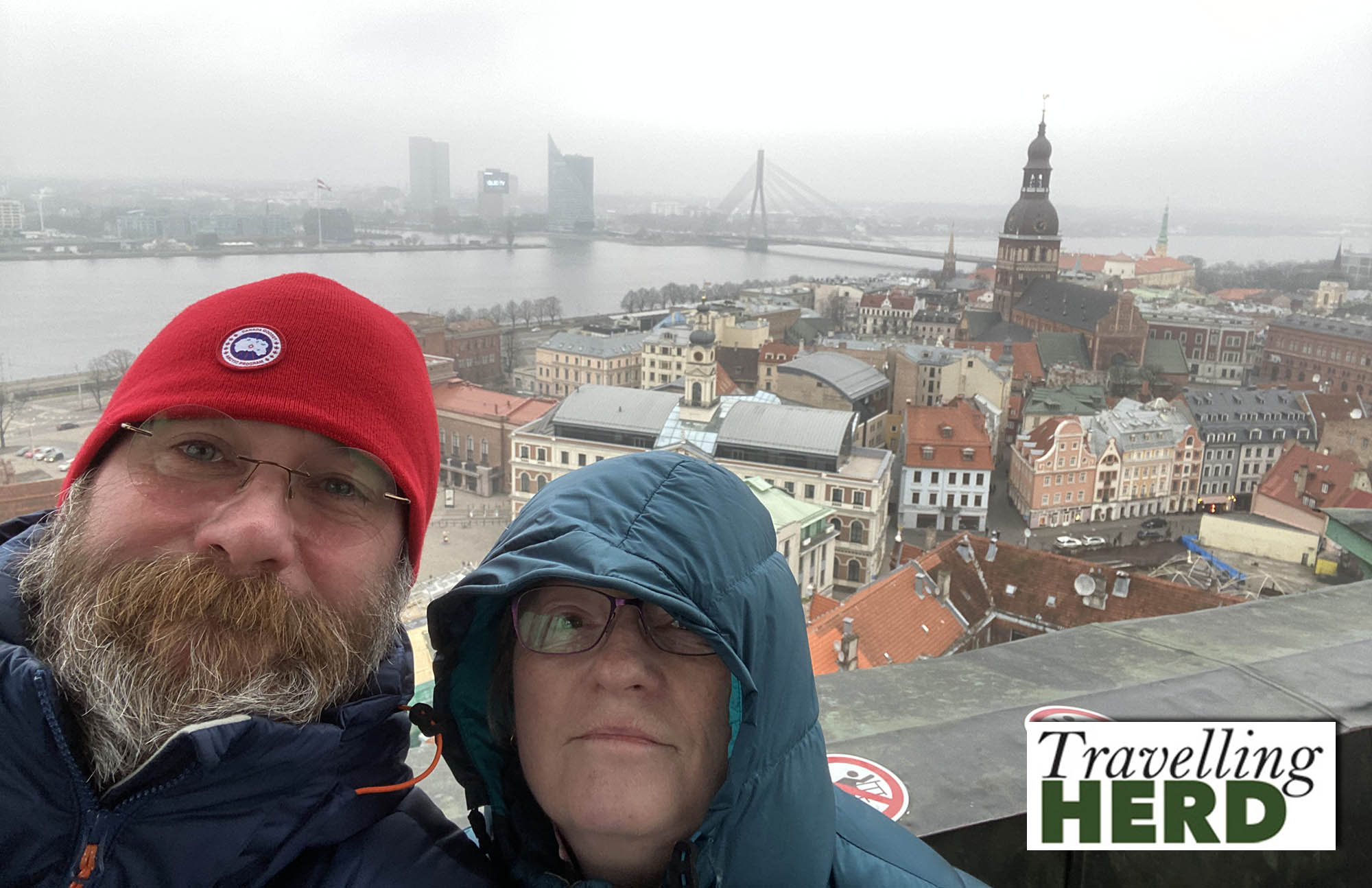Saturday 18th January 2020
Today’s route first took us past the Powder Tower. Originally called the Sand Tower, this was built in 1330 as part of the city’s fortifications and defences.
Over the centuries it has been rebuilt and redesigned several times, and it took on its current form in around 1650. It is a formidable defensive structure at 25.6 metres high and 14.3 metres in diameter with walls which are 3 metres thick.
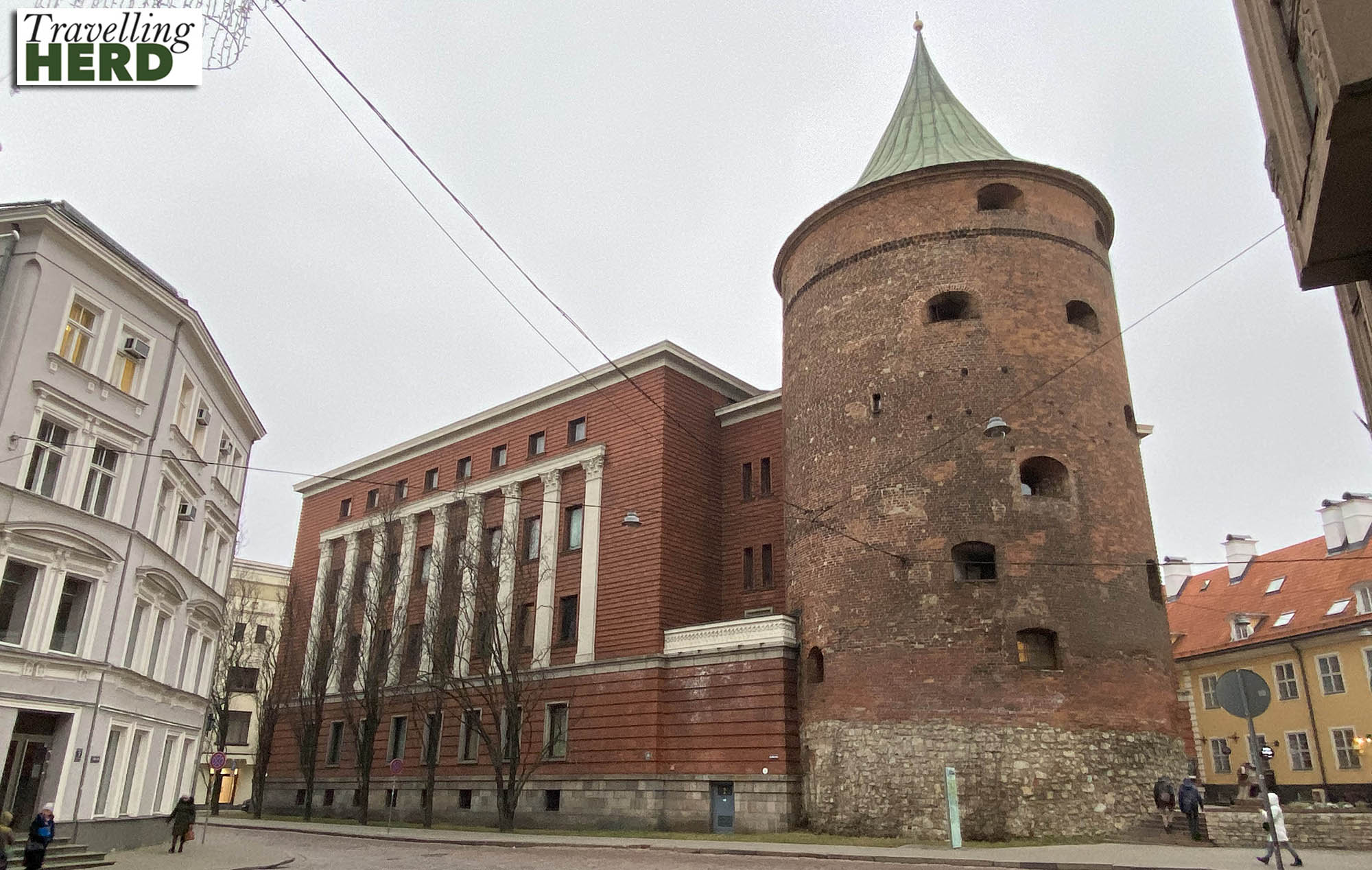
It takes its current name from the gunpowder which was stored there and it now houses a War Museum.
Jacob’s Barracks – a row of yellow, red-roofed buildings – extends along Torna Street from the Powder Tower down towards St Jacob’s Cathedral and the River Daugava. It is the longest building in Old Riga.
Baron Hieronymus Karl Friedrich von Münchhausen, who was the inspiration for the eponymous character in the fictional book Baron Münchausen’s Narrative of his Marvellous Travels and Campaigns in Russia lived here in the mid eighteenth century. The street is now home to bars, shops and travel agents.
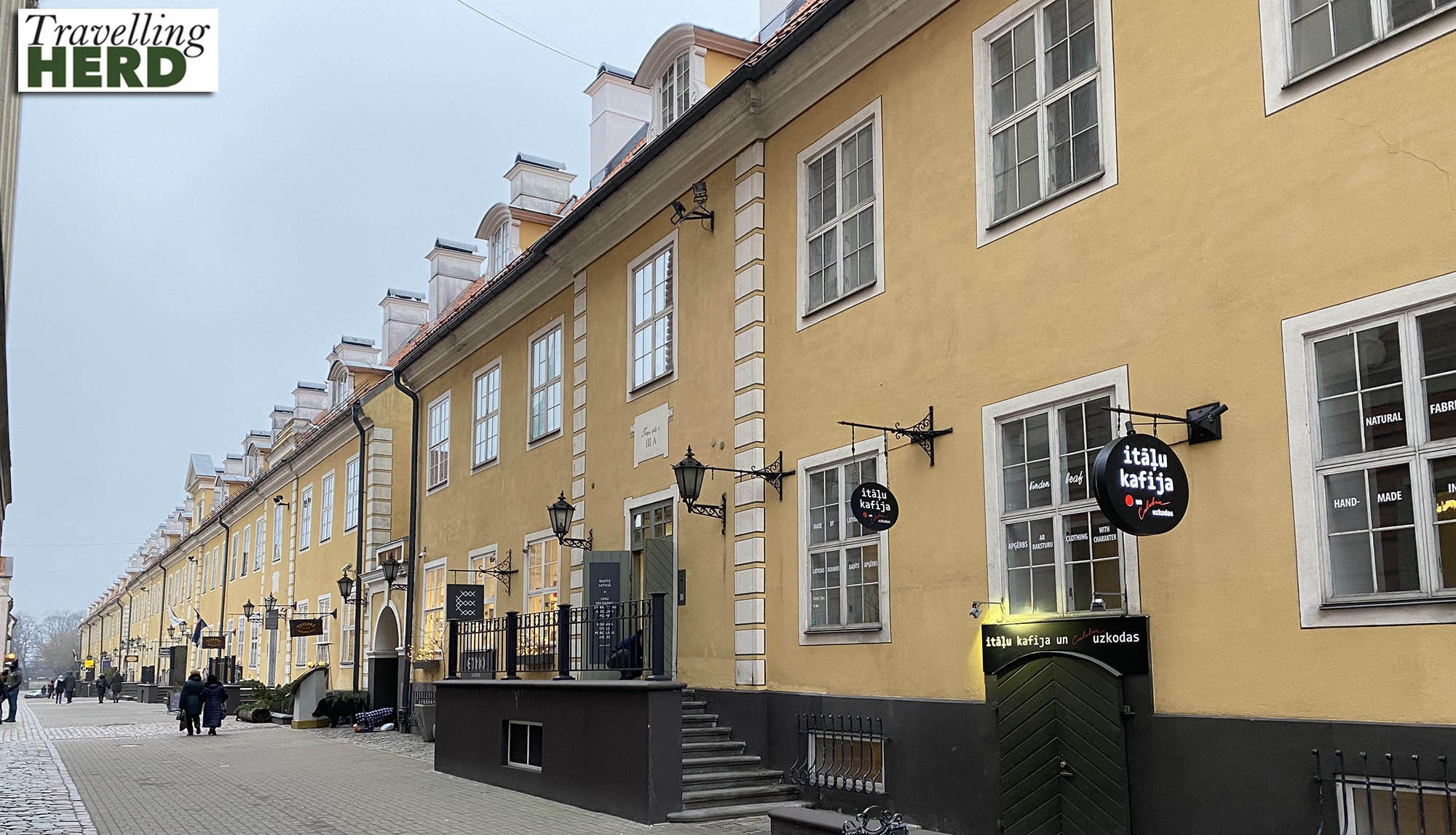
Jacob’s Barracks were built just outside the city fortifications and now face some remains of the city walls [below] and the Swedish Gate [not pictured].
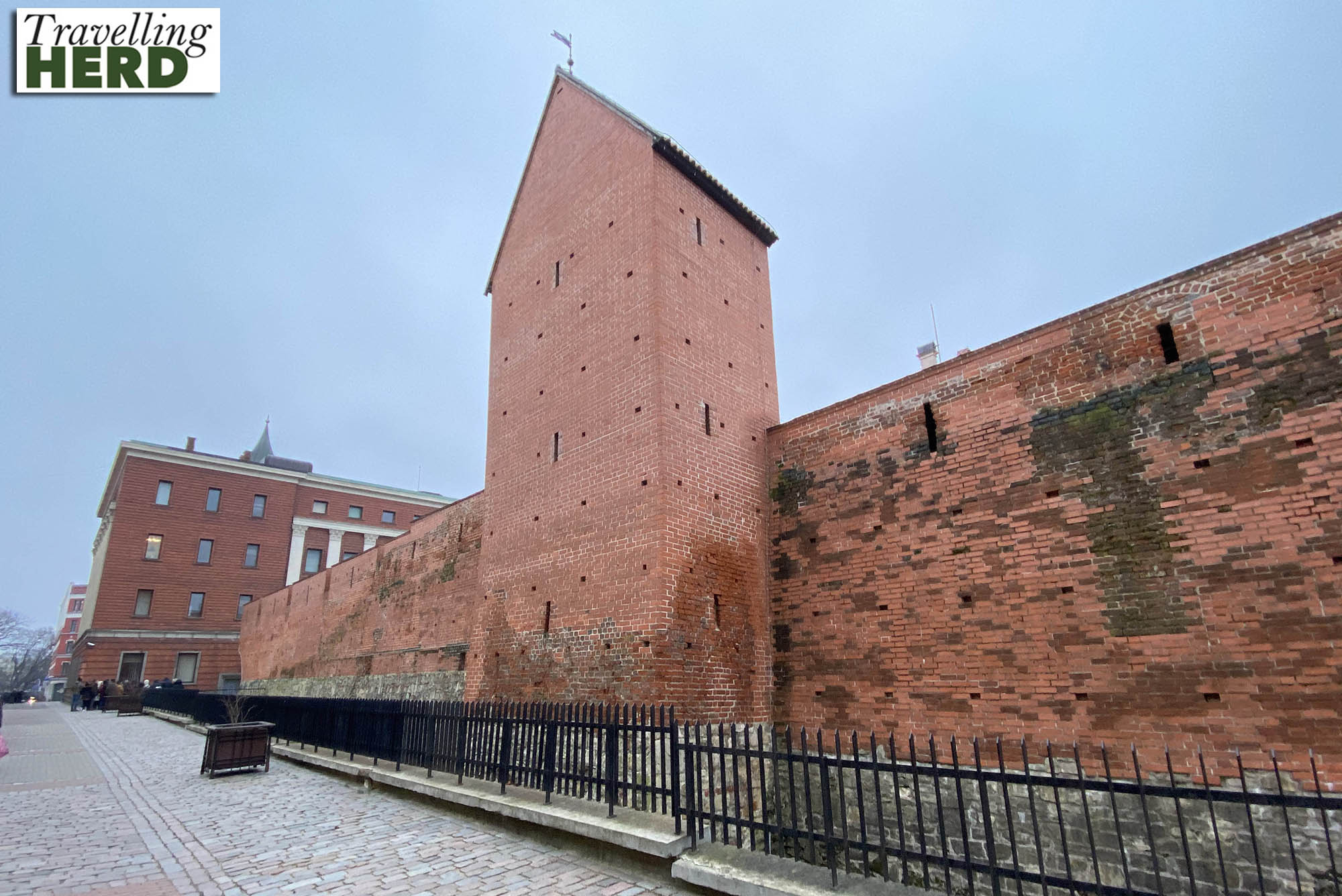
We carried on to St Jacobs Cathedral, the smallest of the four churches in Riga Old Town. Over the centuries it has vacillated between the Roman Catholic and the Lutheran Churches.
Originally Roman Catholic, the start of the Reformation in Latvia in 1522 was marked by sermons delivered here and in nearby St Peters Church. St Jacobs became the first church in Riga with a Lutheran congregation.
The King of Poland, Stephen Bathory, gave the building back to the Catholics in 1583 and some time later to the Jesuit Order. Under Swedish rule, in 1621 St Jacob’s Cathedral was returned to the Lutherans, but in 1710 the church fell, along with the city, under the rule of the Russian Empire. In 1812, during the Napoleonic Wars, the building was used as a warehouse for food supplies.
Subsequently, in 1923 the Cathedral reverted to the Roman Catholic Church.
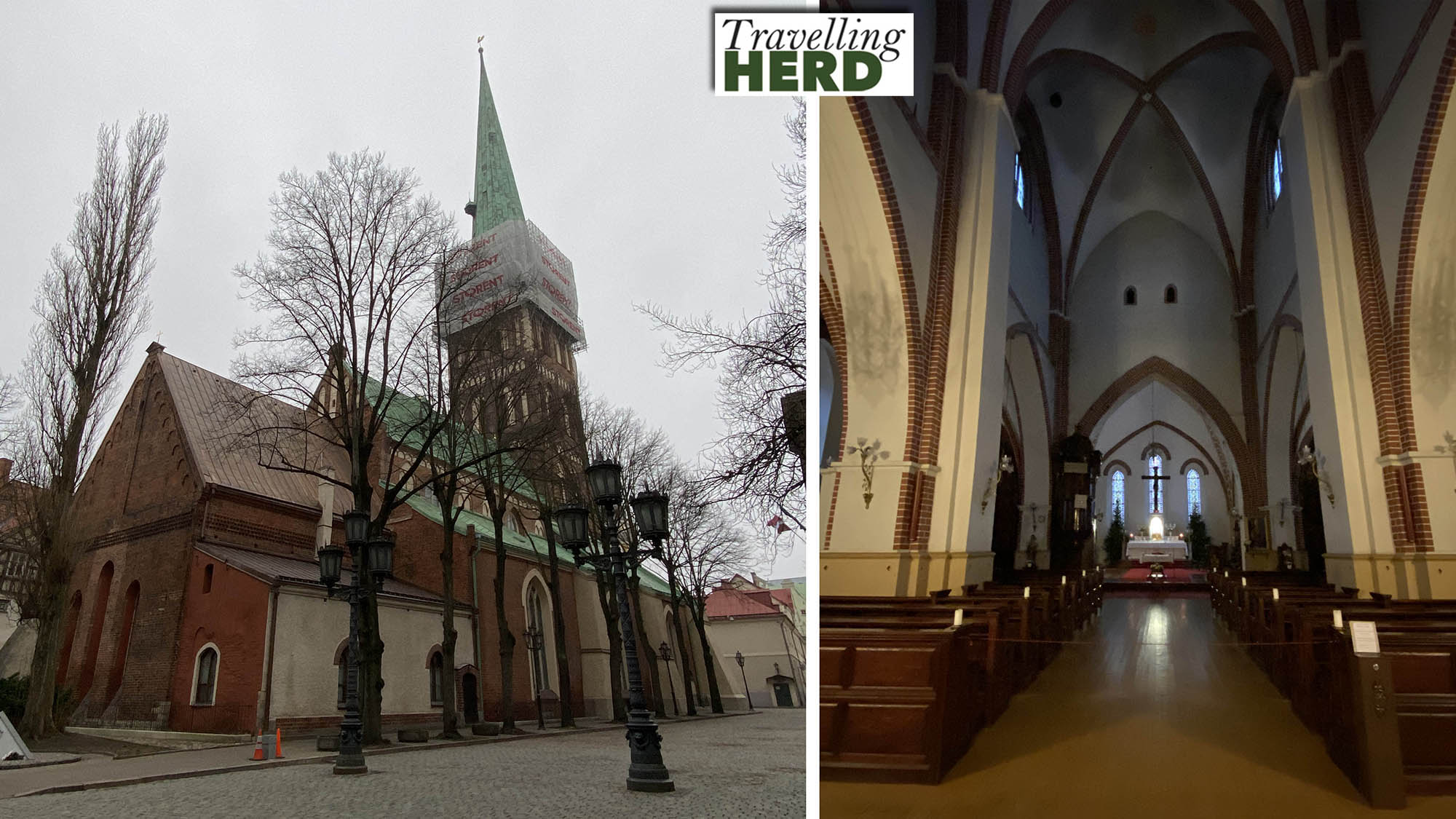
A little further on we came to Riga Dome Cathedral, which encompasses many architectural styles and is said to be the largest Medieval church in the Baltic States.
In 1547 the Gothic spire burned down during a great fire in the inner city. A new tower was built and completed by 1595 and the Cathedral cockerel dating back to that time can still be seen in the inner courtyard. The cloisters are also open to the public [bottom right].
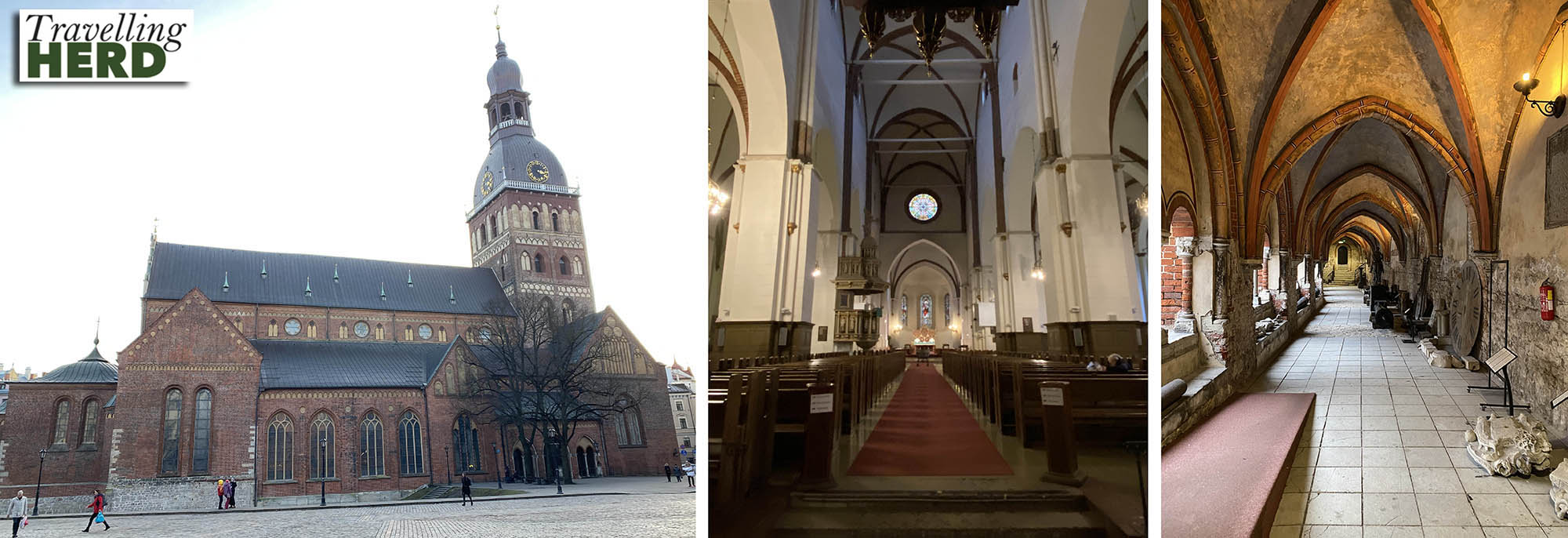
Our route to the Bastion Hill viewing point took us past the Cat House which is named after the black felines [just visible in the photograph below] which adorn its two turrets. Unfortunately, they did not prove to be lucky. The sculptor who created them fell to his death while he was mounting the ornaments on the towers.
Tourists are told that around 100 years ago, the Latvian owner of the building was blackballed from the Great Guild across the road by its predominantly German members. Seeking revenge, he had the cats turned around, so that their rears faced the Guild as a form of insult. It is said that after lengthy legal proceedings, the cats were turned back around to face the Guild to which he was eventually admitted.
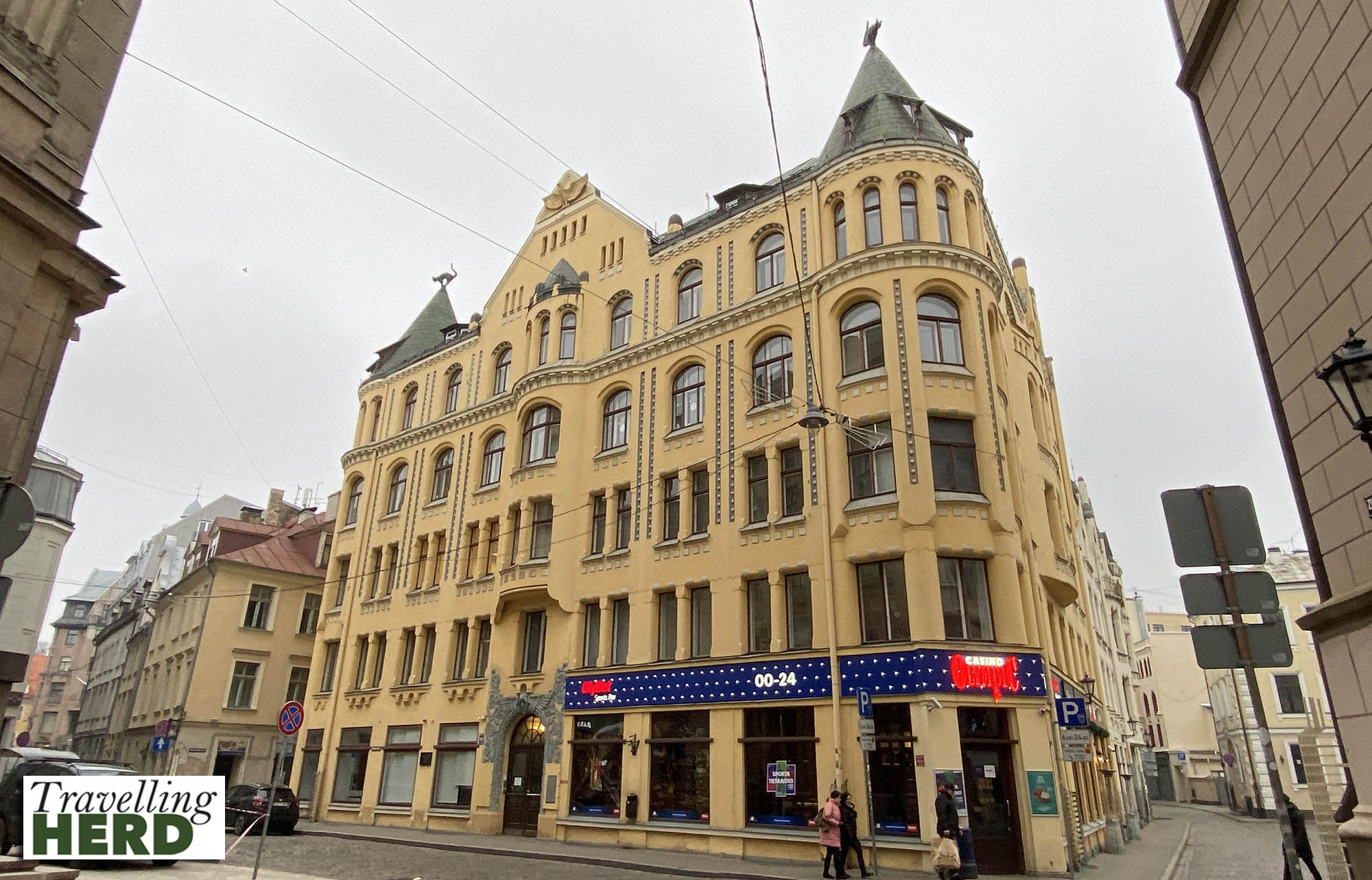
Bastion Hill [below left] was created between 1857 to 1859 to replace the old sand defences. The park includes a water cascade and a stone garden. Memorial stones have been erected to five people killed during the confrontations with Soviet forces in January 1991 now known as The Barricades. Among the dead were members of a camera crew whose footage of the events was shown around the world.
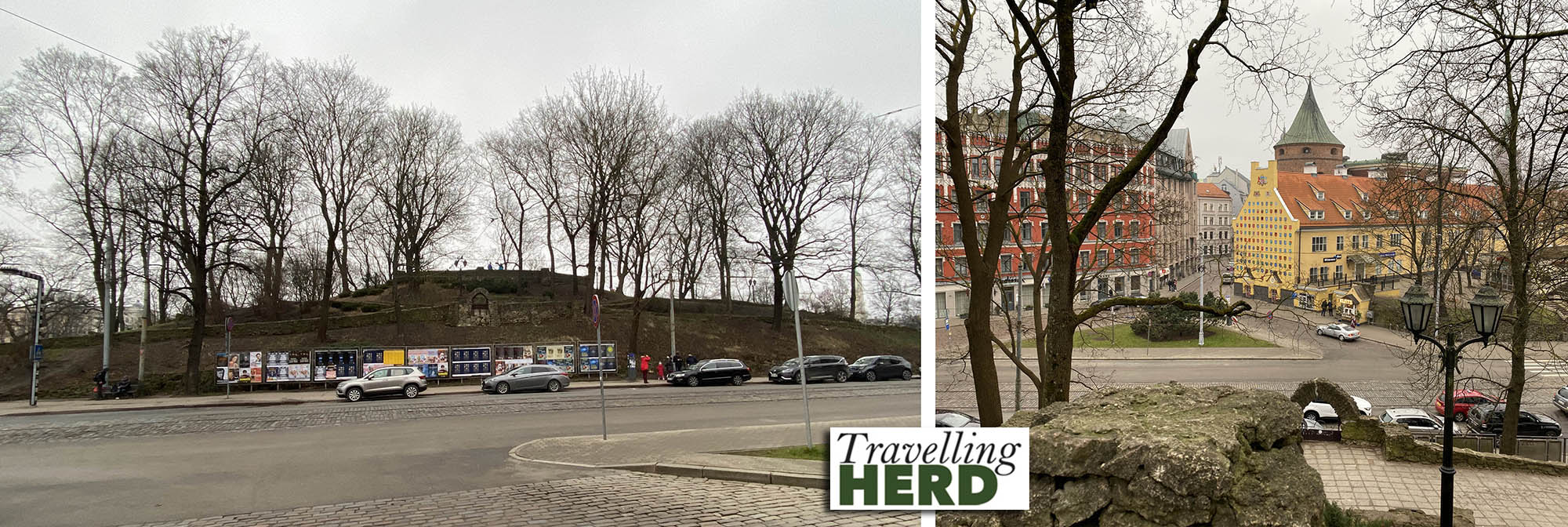
Our friends had recommended the Crumble Cake cafe near St John’s Church. It has a reputation for serving delicious apple pie and apple crumble and we dropped in for a welcome coffee break.
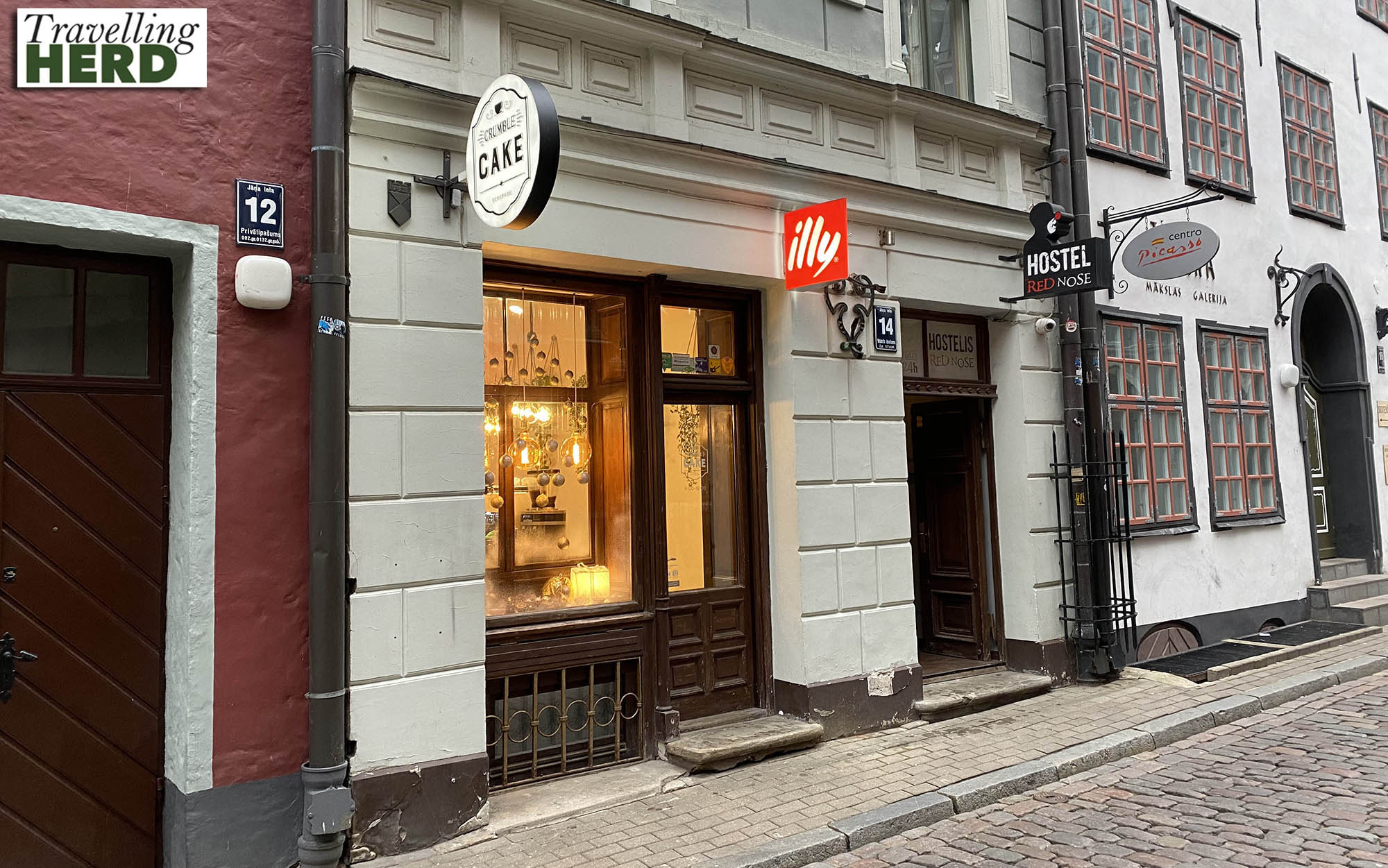
Close by is St John’s Courtyard which contains the remnants of a 13th-century monastery wall.
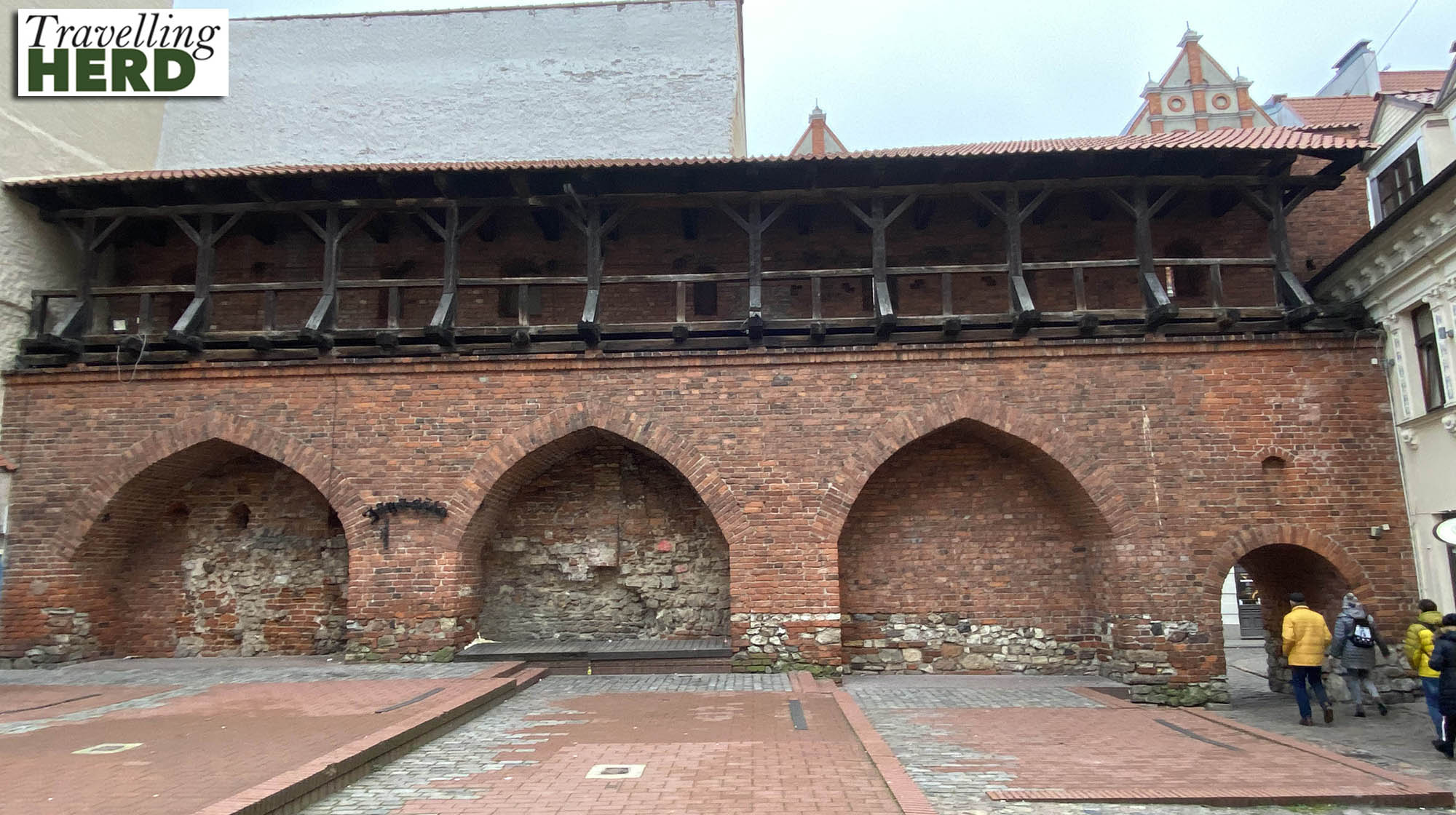
St Peters Church is the tallest in Riga but it has suffered several misadventures over the years. The 15th century church had a Gothic tower over 130 metres high but this collapsed in 1666. The new Baroque tower built in 1690 was the highest wooden structure in the world at the time but it was struct by lightening in 1721 and burned down. Tsar Peter I decreed it should be rebuilt but during WWII, the tower once again burned down. Work to renovate the tower started in 1967.
Outside the church stands a statue from 1990 called the “Bremen Town Musicians” featuring a cockerel standing on a cat which in turn is standing on a dog which is standing on a donkey [below left]. The sculpture was a gift to Riga from the city of Bremen and the characters are based on a fairy tale by the Brothers Grimm in which the animals stare through a window at a robbers’ feast. In this modern interpretation, in the wake of Gorbachev’s perestroika, the animals are staring through the Iron Curtain.
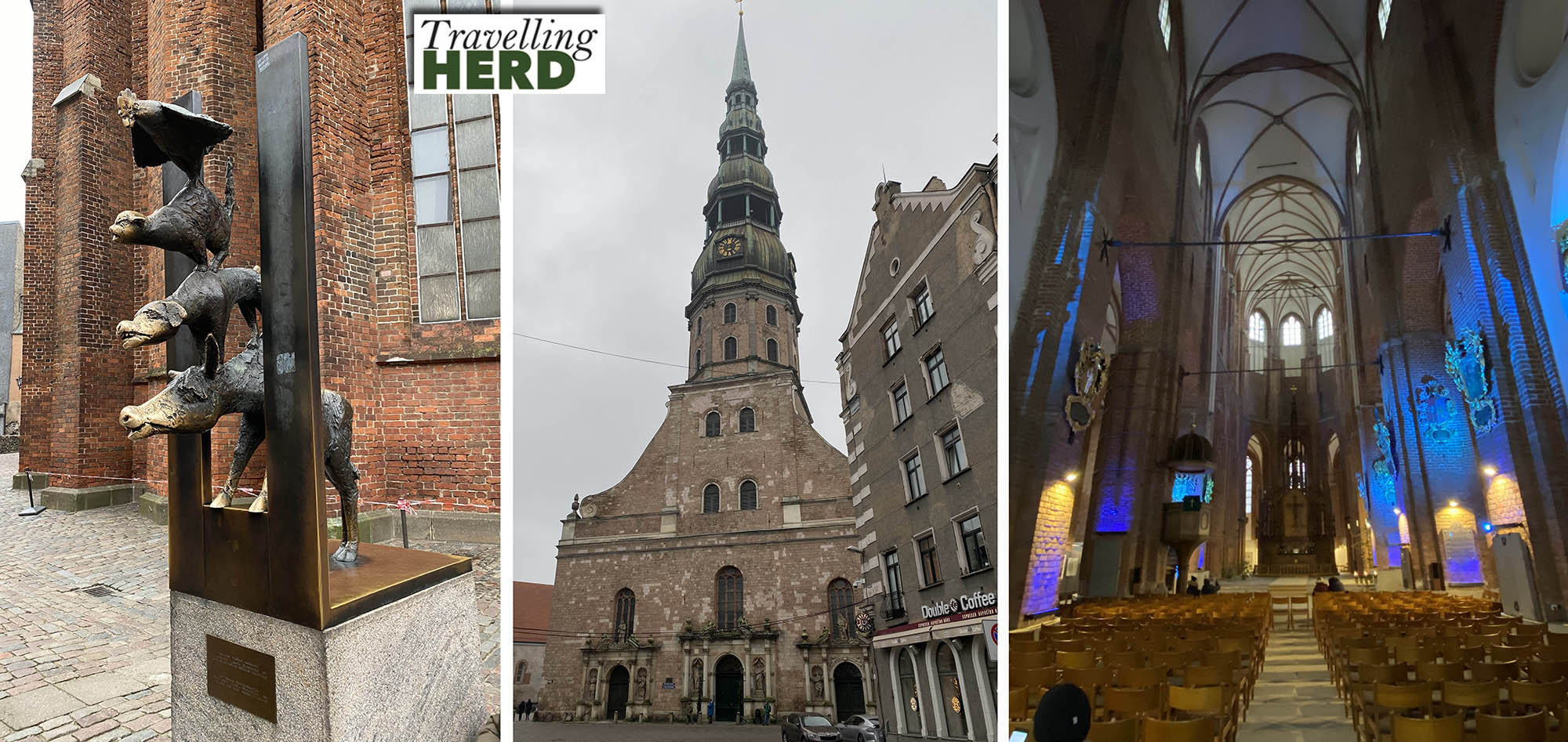
The current tower is 123.25 metres high and has a metal framework with a lift which takes visitors to the second gallery of St Peter’s Church spire, 72 metres up, for views across the city.

From the church we went back to Rātslaukums, the Town Square, to visit the House of the Blackheads.
The Brotherhood of the Blackheads was an association of unmarried merchants, shipowners and craftsmen who were active originally in Livonia [current day Estonia and Latvia] from the middle of the fourteenth century until 1940. The association is still active in Hamburg.
The original House of the Blackheads was built in 1334. The Brotherhood adopted St Maurice as their patron saint: he is usually depicted as a black soldier in knight’s armour and this motif recurs in the corbels and the interior decor as well as on the front of the building.
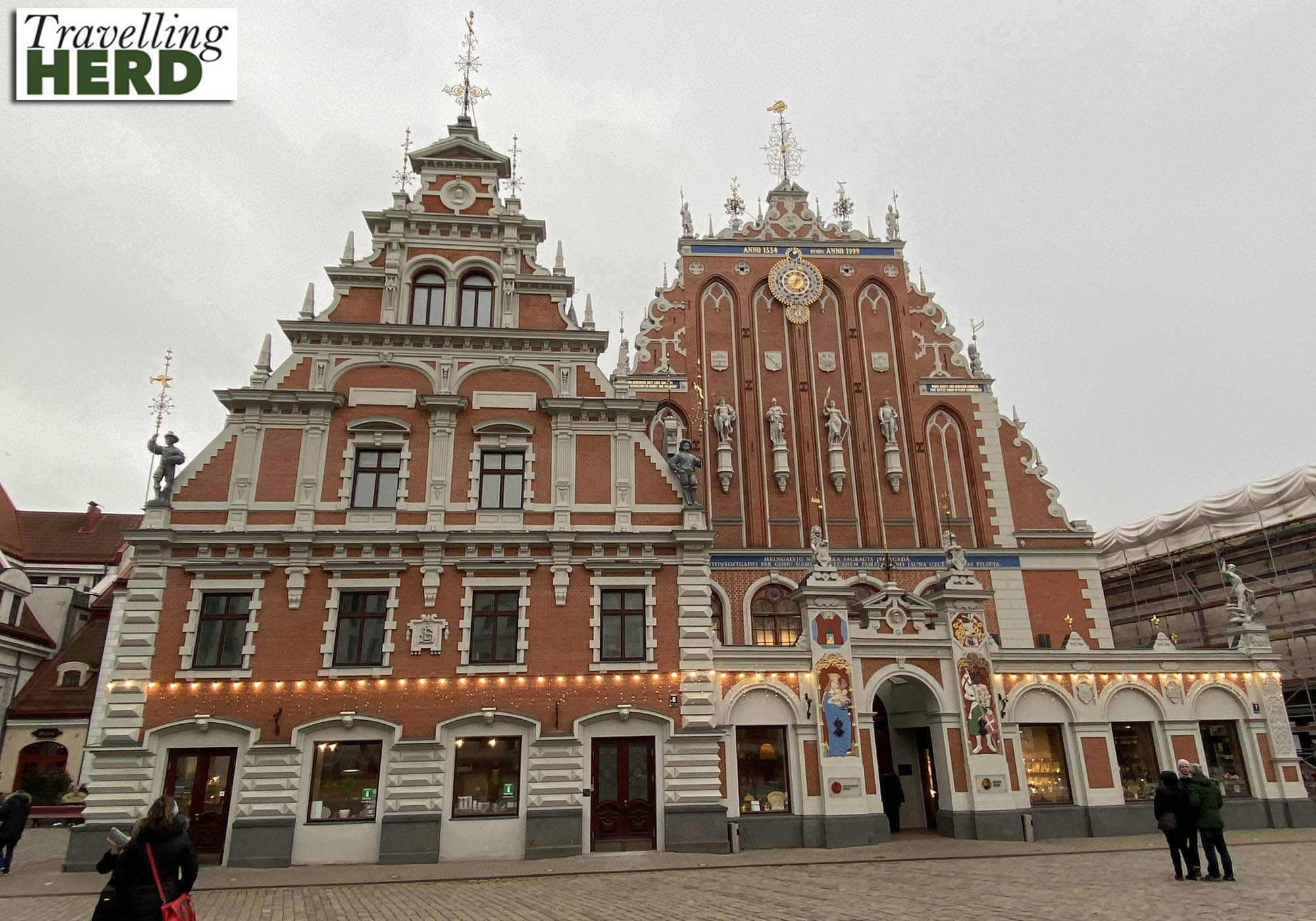
Sadly the original building was destroyed by bombs in WWII, and then bulldozed by the Soviets. It was fully rebuilt in 1999. A tour of the building starts in the medieval cellars.

Upstairs the splendour of the original building has been painstakingly recreated.
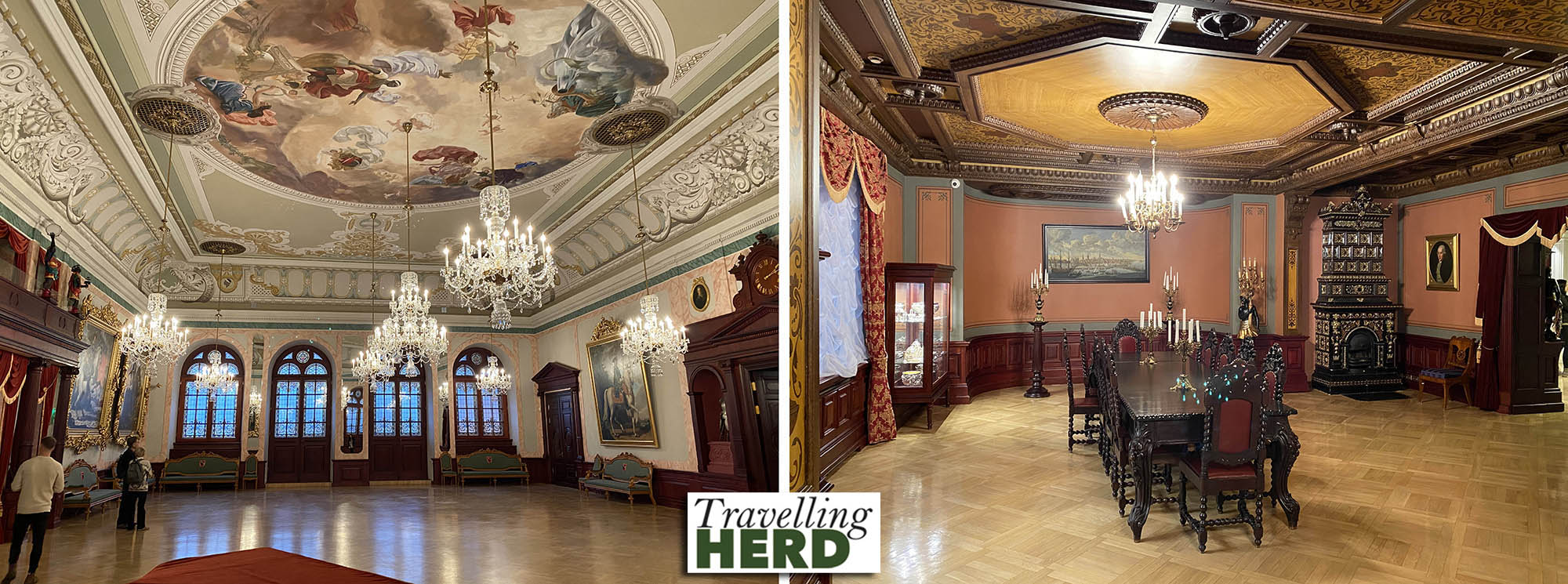
Back at the market we visited the Labietis Brewery Tap bar where we were advised to try one of the new bottled beers which had recently been introduced, flavoured with caraway. As we were a little uncertain about caraway flavoured ale we decided to share a bottle. It proved to be very pleasant. Our seats were, in effect, behind the bar and it was pleasant to sit down and watch the world go by from the staff perspective.

Miezis un kompanija is described as “one of Riga’s most stylish beer bars”. It is a little way out from the centre but features an impressive choice of Baltic and European ales listed on a giant scoreboard which staff have to climb a ladder to update. The barman when we visited was both friendly and knowledgeable and we would recommend this bar, although visitors are advised to be careful as they leave as there is a sheer drop just outside the door which an unsuspecting customer, after imbibing some local ale, could well misjudge.
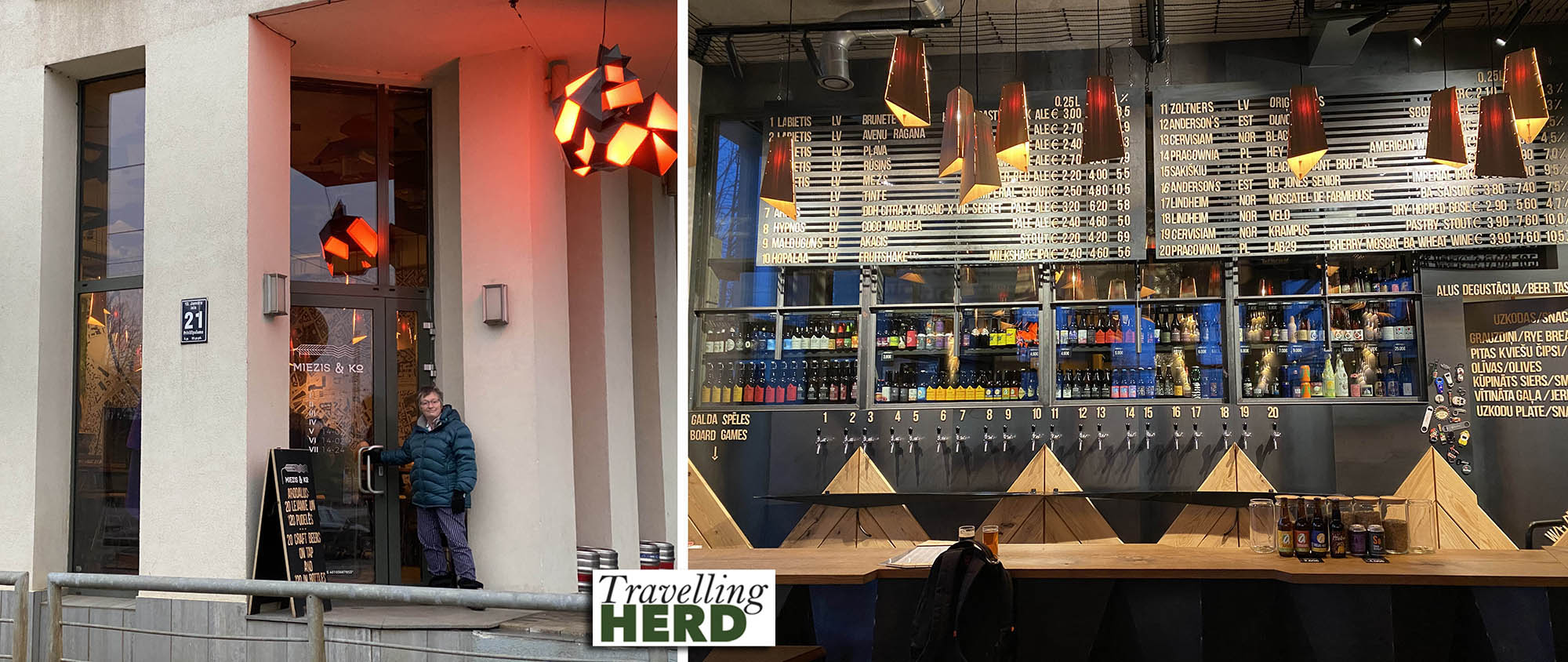
Matilda was not so sure about the next bar on Robert’s list.
The Armoury Bar serves beer in conjunction with the chance to pose with a gun. These are kept locked away and the barman will unlock the cabinet containing your firearm of choice so that you can pose for a photo. Matilda watched slightly anxiously as a young man who looked barely old enough to drink in public selected a gun.
Although Robert felt he should have the full experience, Matilda felt that alcohol and armaments should not mix.
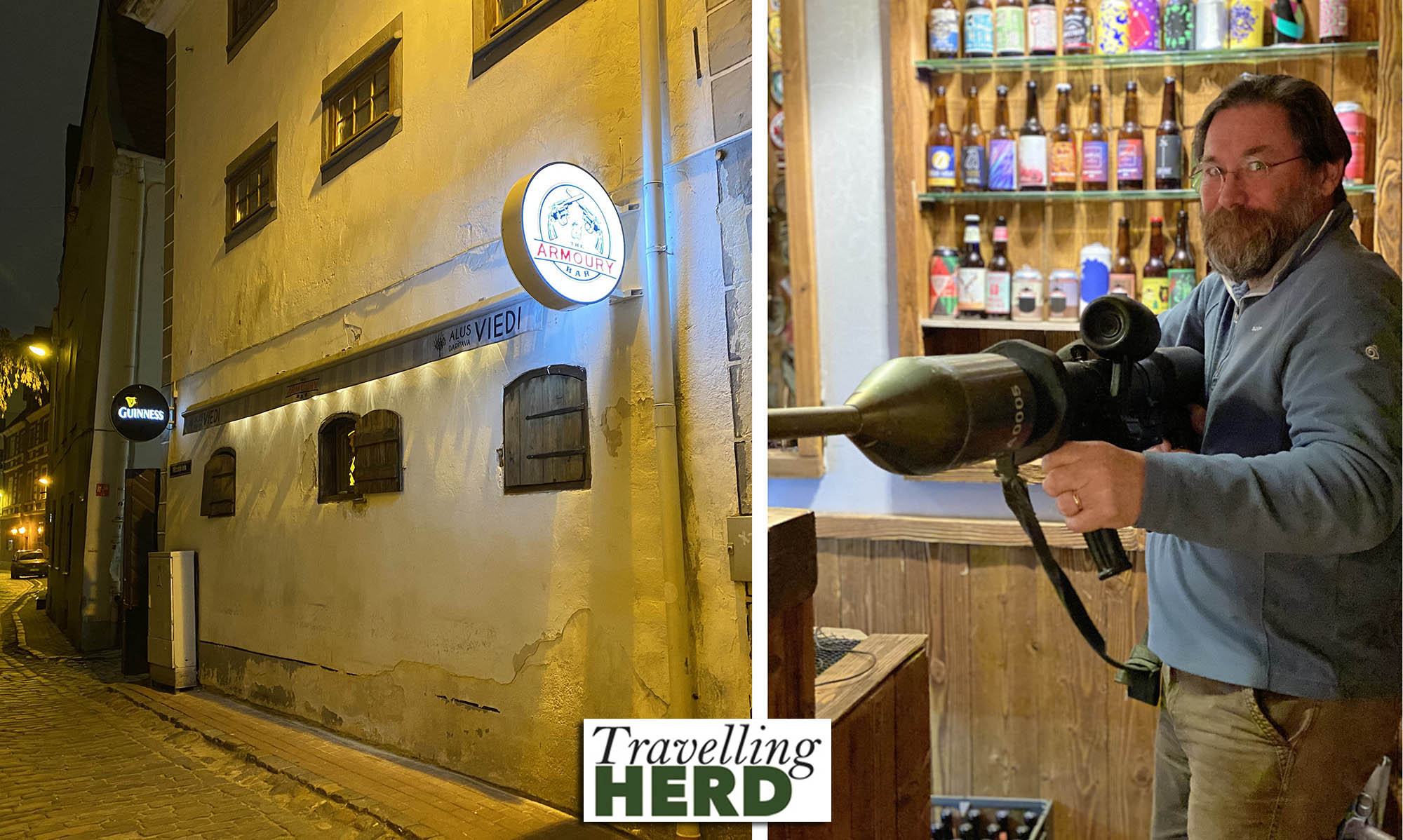
The final bar for the evening was the Trompete Tap Room.
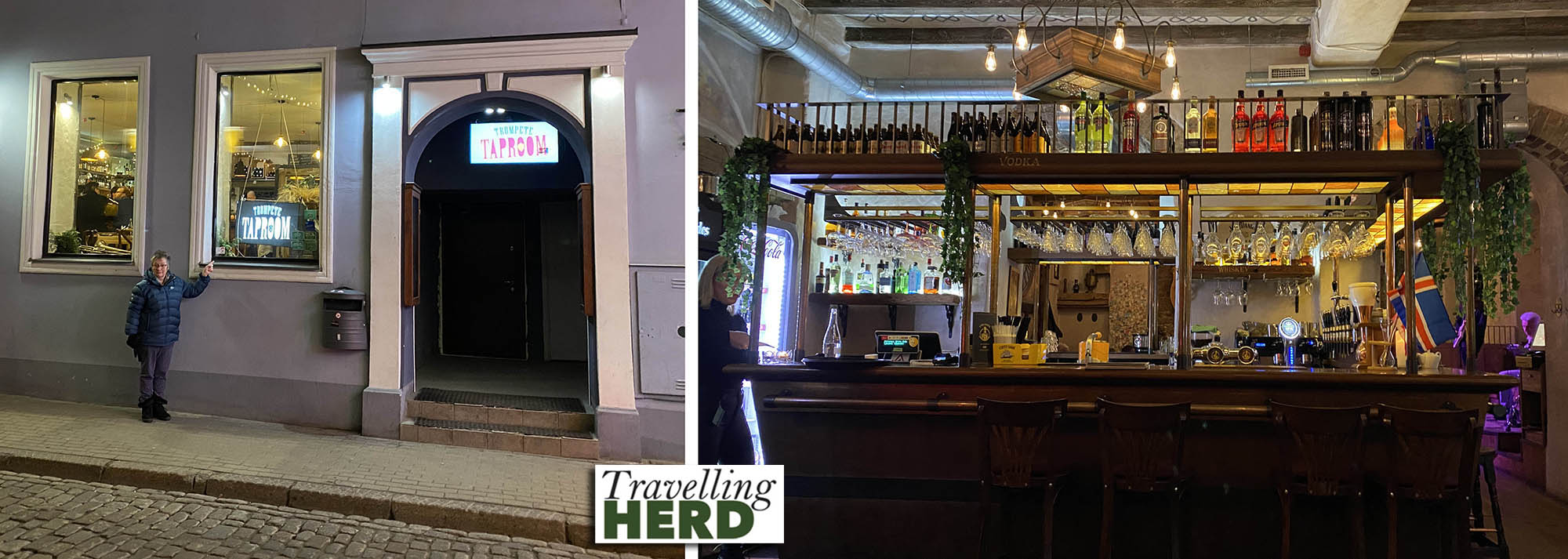
From here we went in search of some traditional local food which we found at The Colonel.
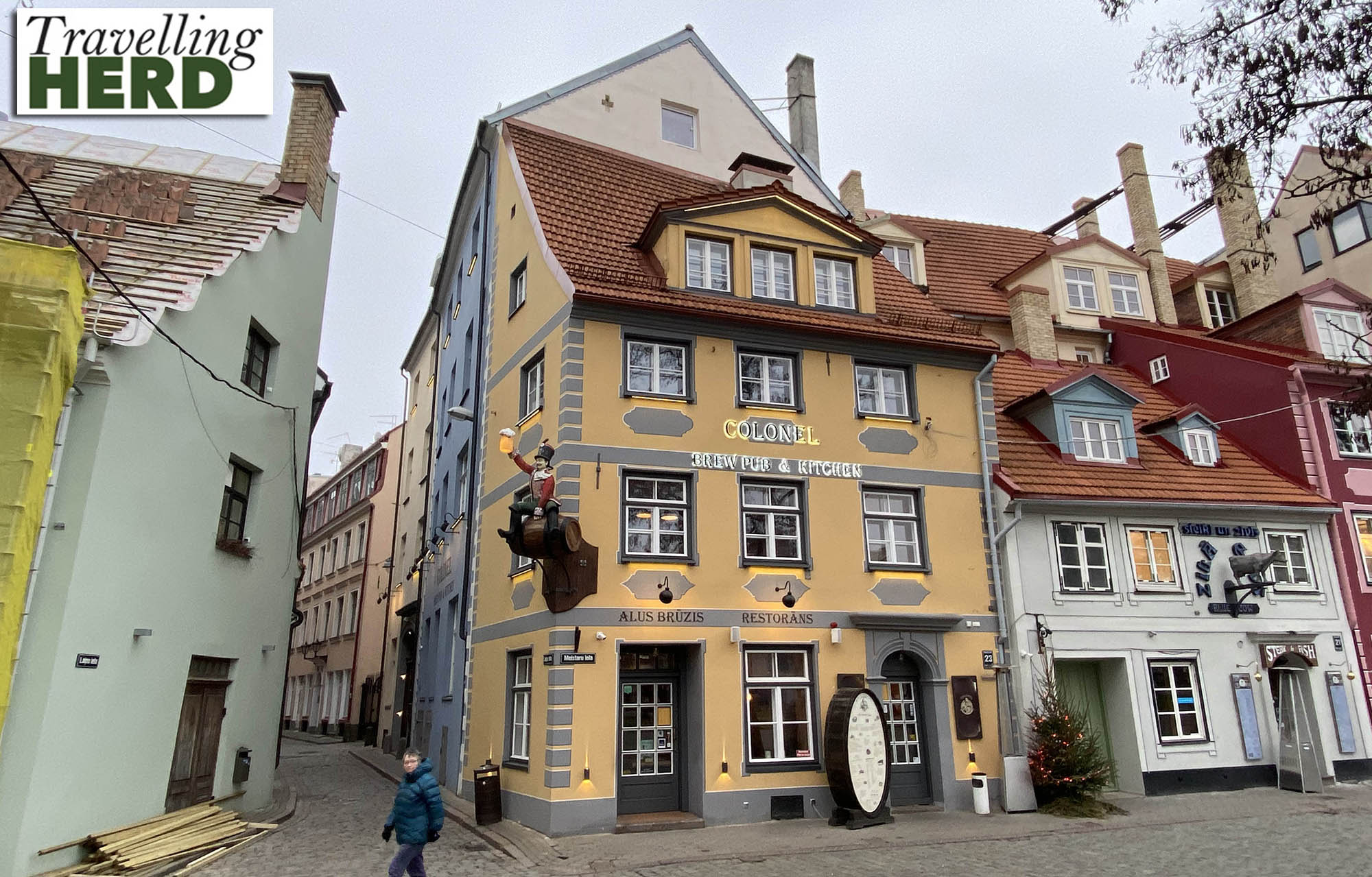
Route Map:
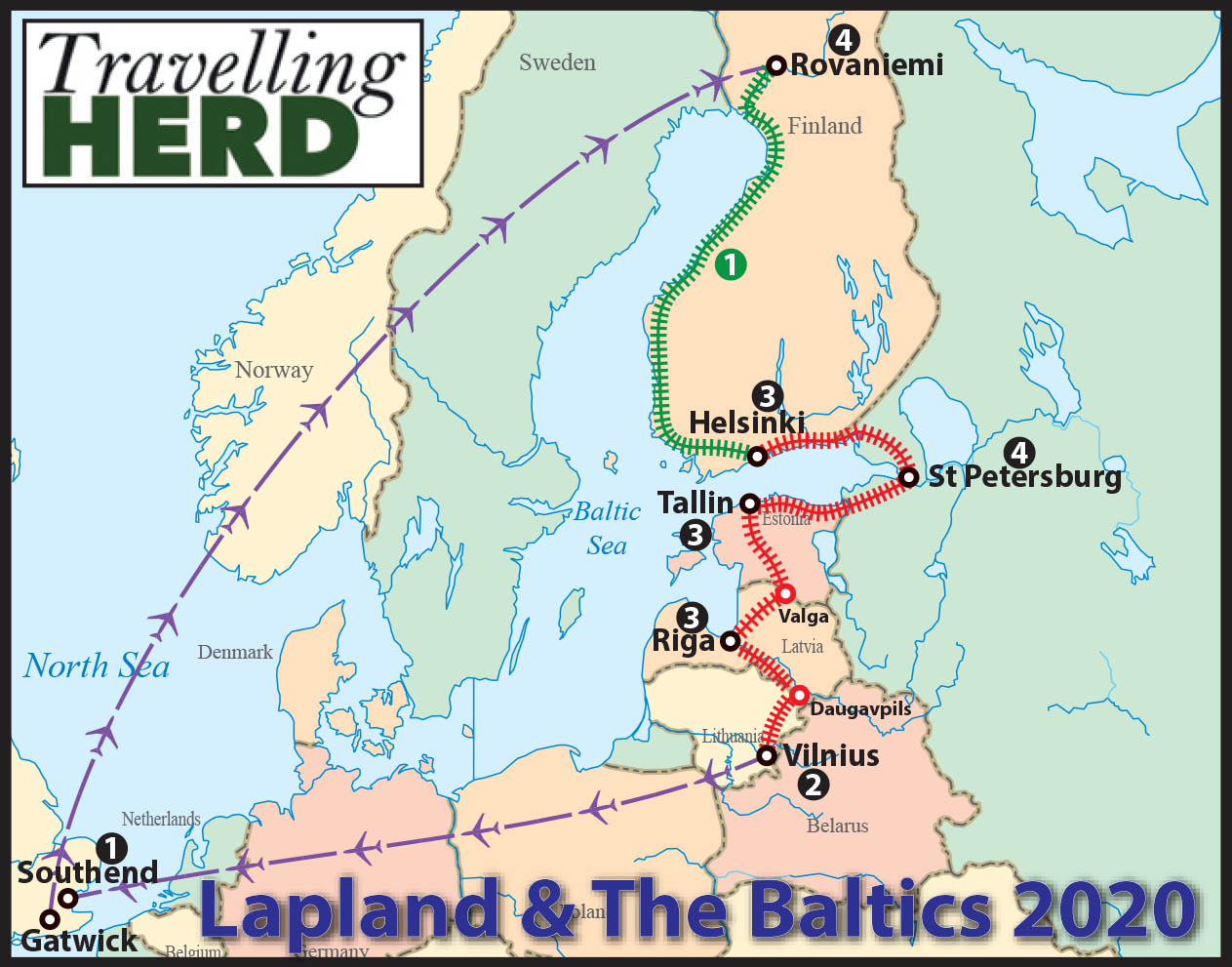
Selfie of the day:
